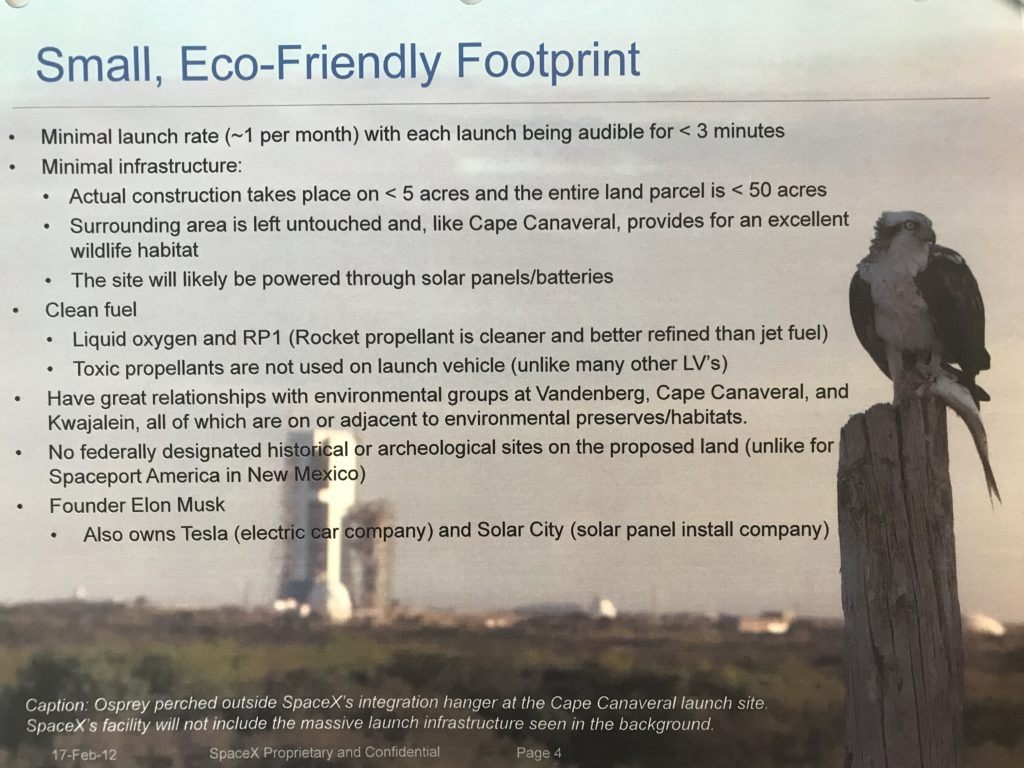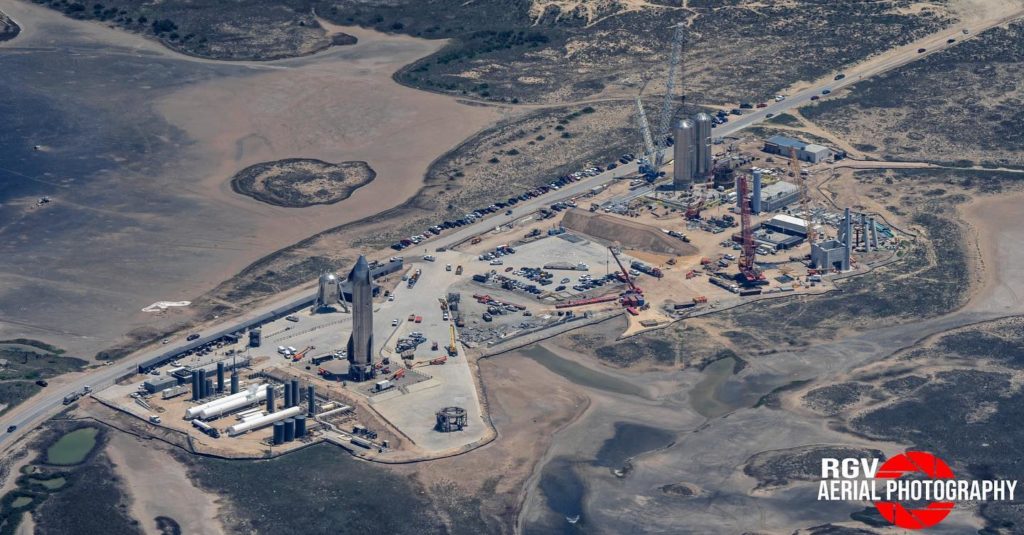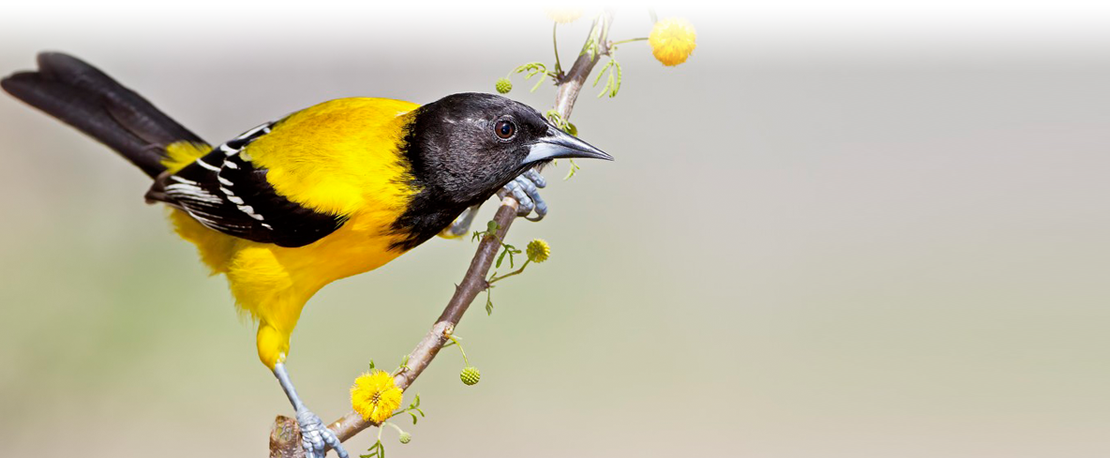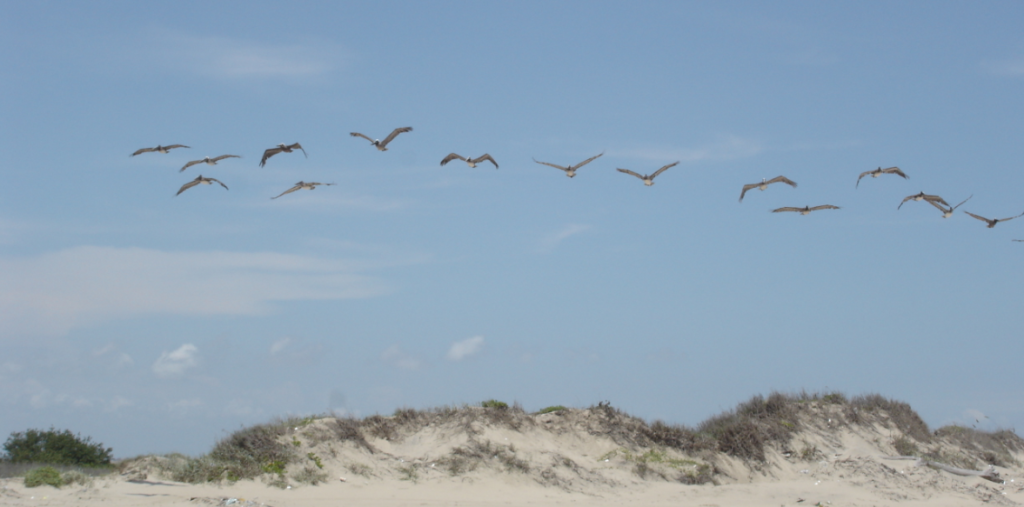
Position Statement
The Friends of the Wildlife Corridor is a non-profit environmental organization that exists to support the Santa Ana and Lower Rio Grande Valley National Wildlife Refuges. Our mission to protect South Texas habitat and wildlife drives our concerns about the SpaceX vertical launch and control center areas in South Texas.
Both the vertical launch and control center areas are bordered on all sides by federal and state public lands—the Boca Chica Unit of the Lower Rio Grande Valley National Wildlife Refuge, Boca Chica State Park, and Texas General Land Office property. U.S. Fish and Wildlife Service manages all these lands. Boca Chica is a unique and diverse ecosystem with extensive tidal flats, salt prairie, scattered black mangroves, and vegetated sand dunes. The ecosystem harbors significant populations of shore birds and other wildlife. Present in or near this area are rare, threatened, and endangered species such as the ocelot, aplomado falcon, piping plover, red knot, snowy plover, and black rail, as well as a multitude of passerines during fall and spring migrations. Boca Chica Beach to the east of the vertical launch area is a research area for coastal biologists and birders. The endangered Kemp’s Ridley sea turtle nests on shoreline within one-quarter mile of the vertical launch area.
SpaceX constructed its vertical launch and control center areas within high-quality coastal habitat, home to endangered wildlife.
Increased activities such as rocket testing, launches, explosions, fires, and water contamination will have increased negative impacts on wildlife and habitat. These effects need to be studied, avoided, minimized, and mitigated.
Damages already inflicted by the vertical launch area and causing degredation of the habitat include:
- SpaceX has caused two fires, so far. The first burned 150 acres; the second was about 11 acres and damaged sensitive dunes.
- Six launches have resulted in explosions that scatter debris across the habitat in as much as a three-mile radius. Retrieval of debris involves heavy equipment scarring the land.
- Traffic volume, exponentially higher, especially since 2018 when the site became a testing facility, limits land manager and public access to public lands.
- Numerous road closures due to launches and tests limit access to lands by USFWS and to the public beach and refuge areas by the public. Original agreements allowed SpaceX up to 180 hours per year of road closings, a number the FAA increased to 300 hours per year. By the second month of 2021 SpaceX had closed roads for 300 hours.
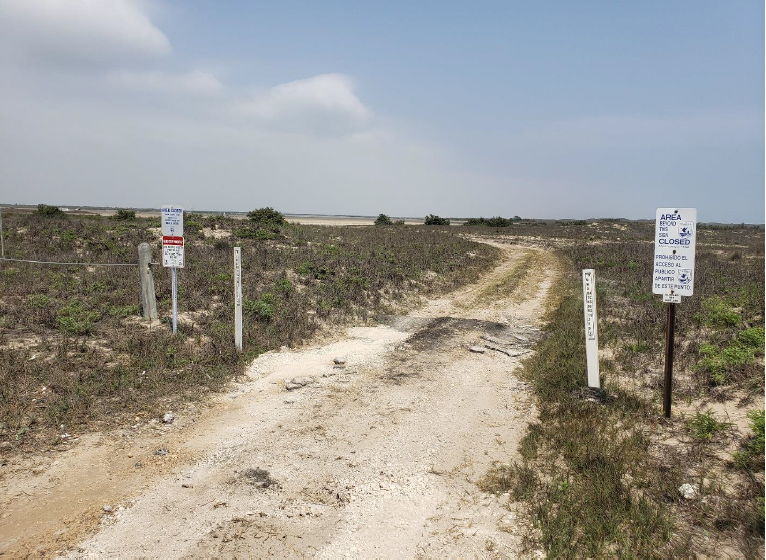
SpaceX has built the vertical launch area higher than the surrounding marsh, tidal flats and vegetated areas and is continuing to build higher. This will likely have the following future effects on the surrounding tidal flats and marsh:
- Surrounding wetlands will be damaged by the vertical launch area storm runoff, launch and fire suppression water, and fuel runoff from leaks or accidents
- Disposal of contaminated water in the detention ponds will degrade wetlands
- Nearby South Bay, a unique and highly productive shallow bay, and its unique fish and wildlife will be negatively affected by contaminated runoff, debris, and spilled hydrocarbons
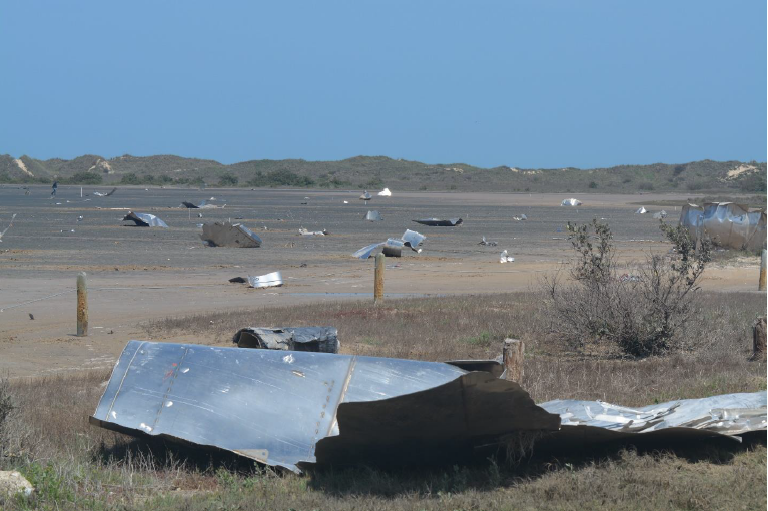
Friends of the Wildlife Corridor urges you to contact your local, state, and federal public officials and let them know that you support the protection and expansion of native habit in South Texas. We urge you to stay informed about the effects that SpaceX is having on South Texas fish and wildlife and their habitat. You can find contact information for elected officials at https://www.usa.gov/elected-officials.
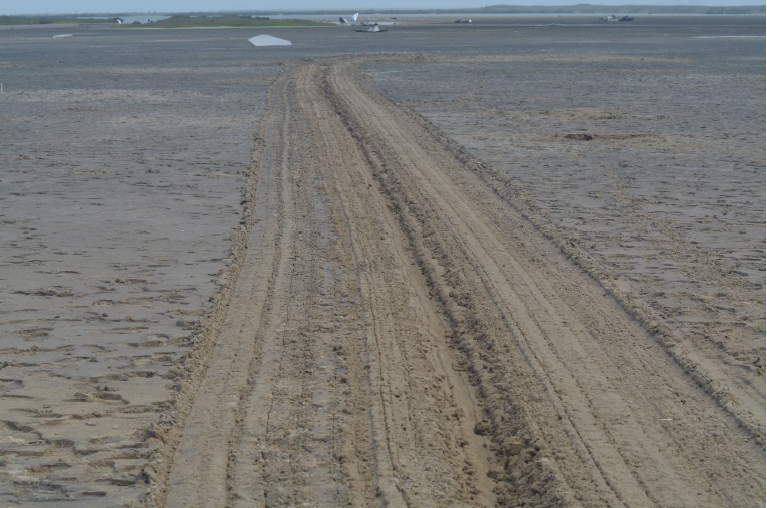
Resources
Updates
Article on SpaceX road closures
Images
